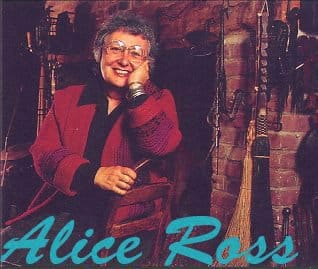Hearth to Hearth: Passover Foods – The Journal of Antiques and Collectibles – April 2002
Passover is for many Jews the best holiday of the year. After more than 5,000 years of recorded history, its celebrations of freedom and the new planting season are as inspiring as one could wish. The ritual seder meals are home based, usually delicious, and filled with nostalgia for childhood memories of grandma’s kitchen. Needless to say, for collectors of Judaica the holiday has provided an abundance of interesting objects, as special utensils have long been produced by Jewish groups around the world.
The connection between Passover and food has everything to do with matzoh, the unleavened bread of the Children of Israel. To be sure, the Ashkenazy Jews (from Northern Europe) and the Sephardic Jews (from Spain and the Mediterranean rim) observe the holiday with basic similarities and a few differences.
But everyone uses matzoh. In the early Medieval period, a council of learned rabbis determined that in order for the matzoh to be completely unleavened, its production needed strict rules, and these are still enforced today.
All steps in the matzoh process are based on interpretations of the early writings and carefully supervised. To this day the fields of growing wheat designated for matzoh must be carefully inspected throughout the season to insure that they will meet Passover requirements. Harvesting and milling observe precautions to prevent contamination (moisture); the special flour is sent to the bakeries, which function under their own set of rules.
The early rabbis determined that after eighteen minutes, from the first addition of water to flour, fermentation would occur naturally [because of the inadvertent inclusion of airborne wild yeasts], and so a large clock with a second hand and a timer is of great importance.
Once set, the dough is quickly mixed and kneaded and distributed to the workers (usually women) who are ready, rolling pins in hand, to roll out each matzoh into a circle about a foot across. These are collected and brought to a table where they are pricked to prevent bubbling, and then whisked to the brick oven, hot enough to have accomplished the baking in a matter of moments. When eighteen minutes have elapsed, all baking stops and every crumb of unused dough, flour, etc., is removed or covered over with layers of paper. Even the rolling pins are sanded. When all possible danger of inadvertent contact with yeast is removed, another eighteen minute session begins. The resulting shemurah matzohs are nothing like the commercial square ones that are commonly used today. One can expect firm opinions about which is best.
At the table the matzoh is regarded with great respect, symbolizing as it does the flight of the Jews from Egypt and slavery. It rests under hand-embroidered and elaborate cloth covers on special plates as costly and beautiful as the family can manage. In past centuries, the platters were made of porcelain, silver, or pewter, often decorated with incised motifs of Passover.
There were also boxy silver containers for the matzos, intricately worked and containing three shelves inside for the matzo. The tops were adorned with a variety of engraved designs, often references to the contents of the ritual seder plate. At the other extreme, the less affluent may have used a decorated tin box like Manischevitz’s “Limited Edition” container.
Sometimes matzoh holders were made with matching all-important seder plates designed to hold the remaining six symbolic foods of the Exodus story: hagigah, a roasted egg (for life and death), zero’a, the lamb shank (for the sacrificial lamb whose blood marked the doorposts of the Hebrews and saved them from the Angel of Death], maror—the bitter herbs, often horseradish (for the bitter life of slavery), karpas, spring greens or vegetables (for the new agricultural season), haroset—a sweet and spiced fruit and nut mixture (for the cement of the pyramids built by Hebrew labor), and a bowl of salt water (for tears) in which to dip egg or herbs. The plates were decorated with the names and images of these foods; some had removable matching cups for the designated places on the plate, and held the appropriate ritual foods for tasting and discussion during the haggadah reading. Influenced by the crafts of Israel, newer seder plates often have their own partitioned sections, and are usually highly decorated platters of enameled copper or brass, ceramics, or silver.
Another important article of the seder table is the haggadah—the book of prayers, directions, explanations, philosophizings, songs, etc.—that structures the long ritual reading that precedes and then concludes the meal.
Old haggadahs are highly collectable, whether plain or fancy—and some are works of art. A long tradition of fine illustration has survived in illuminated European medieval haggadahs. In recent years the editions by artists Marc Chagall, Ben Shawn, or Paul Raskin have contributed an element of contemporary design. No matter what the period, the Hebrew text has remained fairly constant over many centuries, and is often accompanied by a parallel translation into the language of origin (English, German, Polish, Czechoslovakian, Italian, etc.). As new offshoots of Jewish interpretation have sprung up, revised haggadahs have adjusted the text, usually retaining the essentials in some form but adapting them to fit a shifting philosophic view. Jewish Reconstructionists, vegetarians, humanists, or women’s groups, for example, have developed their own hagaddahs.
Today the early 20th century modest and give-away editions have become very interesting to collectors of Judaica. Probably the most well-known is the Maxwell House Haggadah, an advertising coup initiated in 1936 with the distribution of 20 million free copies. Other commercial food-related companies followed suit, and they are still offered in markets and wine shops by Maxwell House Coffee, Manischevitz wine, and Horowitz Margareten Matzoh. Anyone is invited to help him/herself to these freely, sometimes a blessing as the host must provide one for each guest (sometimes a crowd) to read along.
The collector may, of course, want to know about a variety of other antique table appointments. Lovely candlesticks, old or new, are integral to the holiday table, as candle-lighting ushers in the ritual. Special basins and pitchers, again in a variety of materials, are used for the handwashing before prayers.
Wine, another necessity (it is required that participants drink four times during the reading) requires wine cups, traditionally silver. Assorted salt dishes and serving pieces grace the meal with their festivity. Be prepared to find that precious pieces that survived the centuries are often elaborate and costly, as are newly designed pieces. However, others, such as the collector of immigrant artifacts, may find Passover pieces of tin, glass or inexpensive china.
It would seem a shame to hide special Passover pieces from year to year, especially when they were valuable and ornamental. And yet the tradition has required that Passover dishes and tools be kept separate from those used year round. There is a complex technique for making such extraordinary pieces kosher for Passover, enabling some of the impressive possessions to be used or displayed at all times.
In the end, all this finery takes second place to the feast itself, usually the vehicle for displaying the talents of the hostess.
The Ashkenazy homemaker (of northern European tradition) was typically judged on her home-made gefilte fish (ground, spiced and simmered fish patties, served cold) and her redolent chicken broth with requisite kneidlach, the matzoh balls or dumplings which, according to one’s experience, might have been air-light or rock hard.
The rest of the meal is chosen according to one’s celebratory repertoire, so long as it does not contain the foods forbidden on Passover. As grains are often forbidden, matzoh and matzoh products are used as substitutes in a great many standard dishes. The holiday and its culinary specialties and limitations lasts for eight days, and the Passover sections of many cook books are filled with breakfast, luncheon and dinner options.
In case you’ve a mind to try the kneidlach the traditional way, it is not really hard. First you must supply yourself with a box of matzoh meal, often available in supermarkets in the ethnic section. Then you must plan to make the batter several hours in advance of cooking- even the day before.
Most of the old recipes used a small amount of rendered chicken fat, which imparts a wonderful flavor to the kneidlach. This could be your once-a-year moment to give up cholesterol fears, and indulge in a small way. If not, you can substitute margarine or oil, but with some loss of flavor. Note that in a kosher kitchen chicken fat is the preferred fat with a meat meal, as meat and dairy foods (butter) are not permitted together. You can often buy rendered chicken fat at kosher butcher shops, but it is a simple thing to make you own. Remove the fat and some of the fatty skin of the chicken that you will use for the soup. Cut or chop it coarsely, and put it into the microwave oven in a covered bowl. Cook in 1-2 minute spurts until the schmaltz is liquid and golden, and the remaining tissue is lightly browned and crunchy.
(Or do the rendering in a saucepan over gentle heat.) Save and use with discretion: it is gold.
Kneidlach
from the recipe on an unidentified matzoh box, ca. 1940
4 eggs
1 teaspoon salt
1/3 cup water
1/2 cup matzoh meal (or more, depending on desired lightness)
2 tablespoons semi-soft rendered chicken fat, at room temperature
Beat the eggs with salt for several minutes until they are quite thick and light in color.
Gently and briefly stir in the water and matzoh meal. Over-stirring will reduce the air and make the dumplings heavy. The batter should be somewhat thick and plop off a spoon.
Still more gently and briefly, add the rendered chicken fat. Resist temptation to over mix: it is best if it looks a little unfinished.
Cover bowl and place in the refrigerator for several hours, or overnight.
Some time before serving, bring a large pot of salted water to the boil. Drop the cold batter into the boiling water off a small spoon. Resist the temptation to roll in your hands, as this toughens the dumplings. If it disintegrates in the water, add more matzoh meal. Continue until all the batter is used.
Bring the water back to a boil, lower the temperature to a gentle boil, and continue cooking, covered, for 1/2 hour. Taste for doneness.
One by one, lift the matzoh balls out of the boiling water with a slotted spoon, drain briefly, and immediately place into the prepared and heated chicken soup. They will remain in the soup without spoiling until you are ready to serve, and if there are leftovers, may be refrigerated in remaining soup until wanted.
Makes about 12.
Alice Ross brings 25 years as a dedicated food professional teacher, writer, researcher and collector to her Hearth Studios, at which she teaches workshops in various aspects of hearth, woodstove and brick oven cookery. She has served as consultant in historical food for such noted museums as Virginia’s Colonial Williamsburg and The Lowell National Historical Park in Massachusetts. Ross wrote her doctoral dissertation in food history at the State University at Stony Brook. Currently, she is involved in a major kitchen report on Rock Hall Museum, a 1770’s Georgian mansion on Long Island. Dr. Ross’ e-mail address is aross@binome.com. Her web site is www.aliceross.com
[amazon_carousel widget_type=”SearchAndAdd” width=”550″ height=”200″ title=”More on Hearth cooking:” market_place=”US” shuffle_products=”True” show_border=”False” keywords=”Open Hearth Cooking” browse_node=”” search_index=”Books” /]





Related posts: